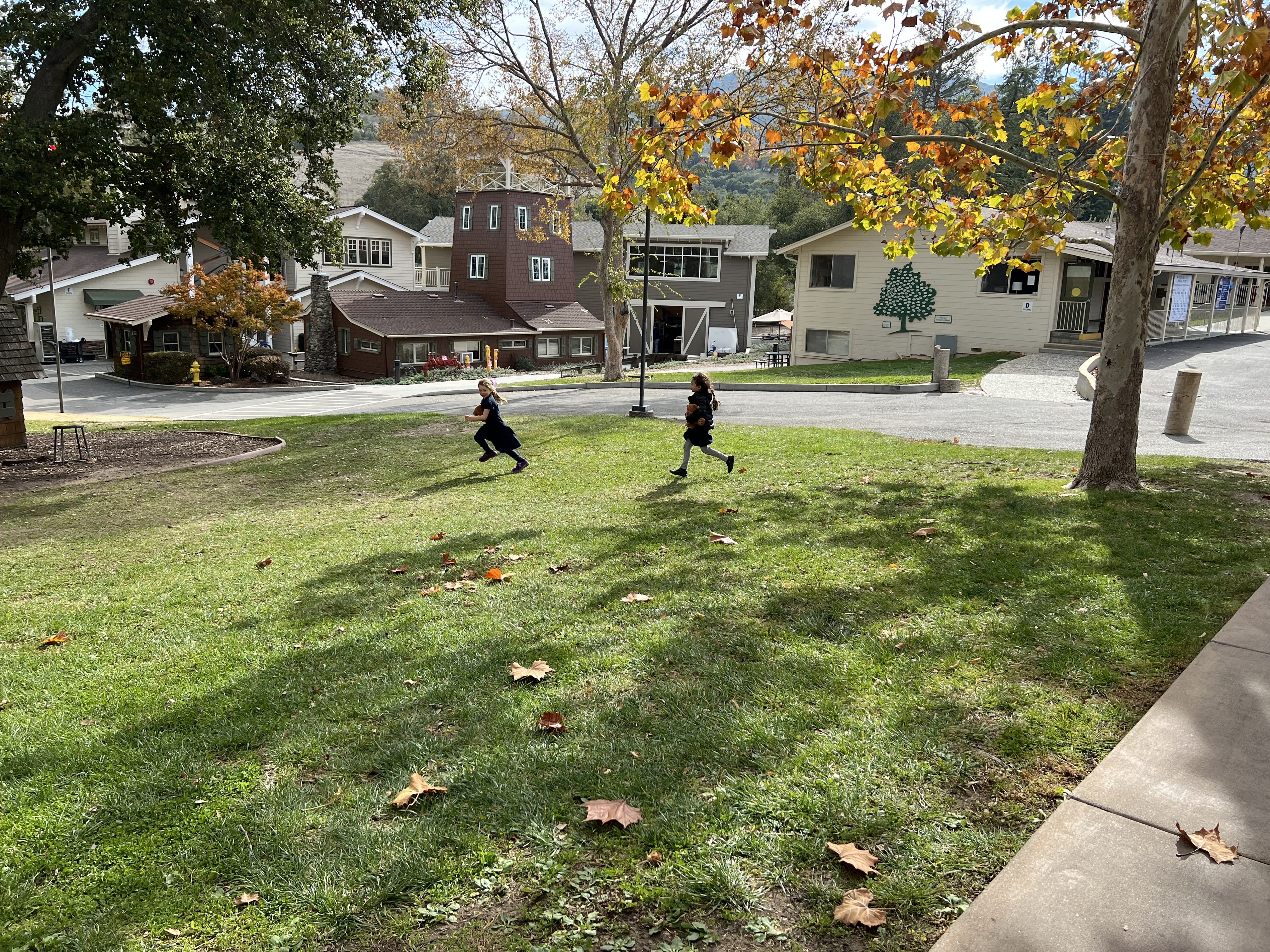By MS Integrated Science Teacher Sarah Hollingsworth and MS English & Integrated Studies Teacher Cate Murray
A dynamic and unique part of the lower and middle school schedule, the “Reach Beyond Block” is a dedicated period of time that serves as an opportunity each week for students to experience new interests, engage with local partners for broadened perspectives, and engage projects that encourage students to consider what matters to them – from the environment, to healthy foods, to artistic express, to rock climbing, and more – and how they can harness this passion or area of exploration and reach beyond themselves to make a difference in their communities.
The “Muralists,” a group of fourteen 6-8th graders, visited South First Street in downtown San Jose and took a walking tour of Oakland in efforts to see the cities from a different perspective: through the lens of murals and street art. What is art? Who gets to decide what is art? If it’s not in a gallery, is it art? What if it is illegal? What if it only lasts hours before it is painted over? How does street art tell a story or send a message? In order to start answering some of these questions, students did a little bit of research and then listened to the viewpoints of two different local community members.
As part of this inquiry, the Muralists went to Oakland to meet a local artist, Desi Mundo, who has painted murals all over the city and even in Chicago and overseas. Desi is the founder of Community Rejuvenation Project, has been a part of community organizing, and is supporter of advocacy through art. He led the Muralists on a two-hour walk around town to uncover the world of street art and to share the city’s rich culture and history of using art as a tool to promote social justice. Someone in the group immediately asked, “What’s the difference between murals, street art, and graffiti?” Desi’s answer was very personal. He explained how the term “graffiti” is used and viewed from his perspective as a “writer,” a person who writes what many people call graffiti. He took time to differentiate that tagging or “writing” doesn’t necessarily come from gang culture. Desi started talking about a mural nearby that was, in fact, a piece of writing. The letters were bold and it was clear that it took time to create. He pointed out that these often commemorate beloved community members who have died.
Desi even stopped to critique the scribbles on a parking meter to talk about style and that the purpose of writing is to be unique, find your identity, and create a name that is different than other writers. As the muralists walked with Desi, students gained the courage to ask him probing questions, and Desi shared openly. To be a true street artist, a writer, you risk arrest if you are ever caught. You have to be ready to face the consequences. As easily as Desi spoke about the illegal side of art, he also shared insights into every single mural that was in eyesight. Sometimes four different pieces were visible from one street corner. He told the story of each one, he knew each artist and every subject. From the spray painted garage door to the ten-story building, Desi explained artistic technique and the evolution of murals to what we see today. He pointed out the difference between art with meaning and art that has been hired to make something “urban” look “pretty.”
In addition to telling the story of how Oakland’s older murals were used to protest, to make bold statements, and to be the voice of the community for social justice, Desi gave a real life answer to one student’s question, “what is gentrification?” He stood in the parking lot of one of Oakland’s well known murals called, “The Universal Language.” It tells the story of the people who shaped Oakland over time. There are images of Ohlone, Black Panther members, generations of Chinese community organizers, African dancers and black community leaders, and people who helped create the art music district that thrives to this day, just to name a few. Desi explained that this mural will be gone soon. A developer will put a high rise in the parking lot, and the murals that represent the community and span more than five buildings will disappear.
He went further to illustrate his point, saying that the people who can afford to live in this area cannot afford to live in the high rise that will be built. They will have to leave and try to find a place to live. A small light at the end of the tunnel is that the people in the community, some of whom are immortalized on the wall, and even Desi, himself, have formed a coalition. That coalition has put pressure on the developer to invest in the surrounding community. Although it is a step in a positive direction, it won’t be enough. Desi has also gotten support to help organize a new mural to replace the icon that will be destroyed. But importantly, where will the iconic figures from the current mural go next?
So who gets to decide the answer to the question, “what is art?” By asking these questions about murals, students began asking more questions about the issues that our community faces. How do we pay mural artists fairly? How do we provide affordable housing? How do we honor those who came before us and have been fighting for justice for generations? With projects like Desi’s Community Rejuvenation, the hope is that the current generation can empower our youth to do better in the years to come.



